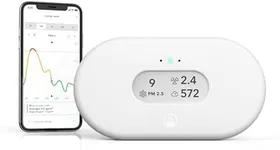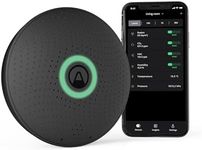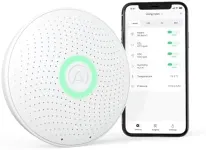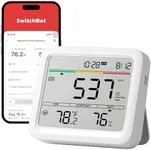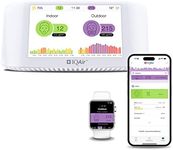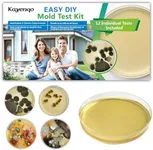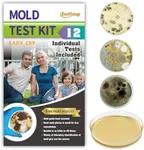Buying Guide for the Best Air Quality Tester
Choosing the right air quality tester is essential for ensuring that the air you breathe is safe and healthy. An air quality tester measures various pollutants and environmental factors in the air, helping you identify potential health risks. When selecting an air quality tester, it's important to consider several key specifications to ensure it meets your needs. Understanding these specifications will help you make an informed decision and choose the best device for your specific situation.Types of Pollutants MeasuredThis specification indicates which pollutants the air quality tester can detect, such as particulate matter (PM2.5, PM10), volatile organic compounds (VOCs), carbon dioxide (CO2), carbon monoxide (CO), and formaldehyde (HCHO). It's important because different pollutants can have varying effects on health. If you are concerned about specific pollutants, ensure the tester can measure them. For general home use, a tester that measures PM2.5, VOCs, and CO2 is usually sufficient. For more specific needs, such as monitoring industrial environments, you may need a device that can detect a wider range of pollutants.
AccuracyAccuracy refers to how close the tester's readings are to the actual concentration of pollutants in the air. This is crucial because inaccurate readings can lead to false assurances or unnecessary alarm. Accuracy is often expressed as a percentage or a range. High-accuracy devices are typically more reliable but may be more expensive. For everyday use, a moderate level of accuracy is usually acceptable, but for critical environments like laboratories or hospitals, higher accuracy is essential.
Response TimeResponse time is the duration it takes for the air quality tester to provide a reading after detecting a change in air quality. This is important for real-time monitoring and quick decision-making. Response times can range from a few seconds to several minutes. For continuous monitoring, a faster response time is preferable. If you only need periodic checks, a slower response time may be acceptable.
Display and InterfaceThe display and interface refer to how the tester presents its readings and how you interact with the device. A clear, easy-to-read display and a user-friendly interface are important for quickly understanding air quality levels. Some testers have digital displays with color-coded indicators, while others may connect to a smartphone app. Choose a display and interface that you find intuitive and easy to use. If you prefer detailed data analysis, a device with app connectivity might be more suitable.
PortabilityPortability refers to the ease with which you can move the air quality tester from one location to another. This is important if you need to monitor air quality in different rooms or locations. Portable testers are usually compact and battery-operated, making them convenient for on-the-go use. If you plan to use the tester in a fixed location, portability may be less of a concern, and you might opt for a larger, more robust device.
Battery LifeBattery life indicates how long the air quality tester can operate on a single charge. This is important for ensuring continuous monitoring without frequent recharging. Battery life can range from a few hours to several days. For portable use, longer battery life is preferable. If the tester will be used in a fixed location with access to power, battery life may be less critical.
CalibrationCalibration refers to the process of adjusting the tester to ensure its readings are accurate. Regular calibration is important for maintaining the accuracy of the device over time. Some testers come with automatic calibration features, while others require manual calibration. If you prefer a low-maintenance device, look for one with automatic calibration. For more precise control, a device that allows manual calibration might be better.
